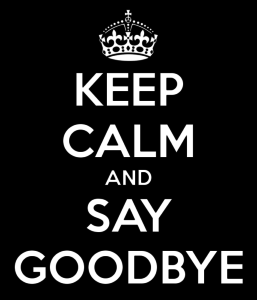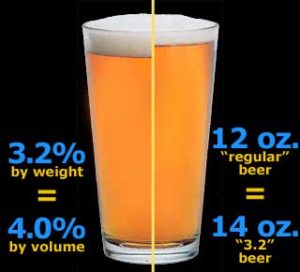 The notorious 3.2 Beer legacy comes to an end in Utah this week allowing breweries like Anheuser-Busch to no longer produce special lower alcohol beers for the state.
The notorious 3.2 Beer legacy comes to an end in Utah this week allowing breweries like Anheuser-Busch to no longer produce special lower alcohol beers for the state.
Here’s the deal…
On August 21, Utah’s low alcohol beer restriction ends an 86 year run which dates back to the Cullen-Harrison Act in 1933. Signed into law by President Franklin D. Roosevelt, that act legalized the sale of beer in the US with an alcohol content of 3.2%.
The roots of this low-alcohol brews can be traced back to the “small beers’ of the medieval ages, unfiltered alternatives to the tainted water at that time. They were less expensive alternatives to the full strength brews used at festivities back then and something that was commonly served to children and servants.
In the US, these barely buzzy brews came into their own during and after Prohibition.
3.2 beer actually refers to “alcohol by weight” rather than the more commonly use alcohol by volume, or ABV designation, which has become the industry standard when referencing the strength of a beer. The reality is that a 3.2% beer is actually a 4% ABV brew when referenced by volume. But still, it’s an increasingly rare commodity that forced brewers like Anheuser-Busch to brew a special version of products like their flagship Budweiser brand if they wanted to sell it in grocery or convenience stores.
Under the existing law which ends Friday, beer with higher-alcohol levels could only be sold in state-run liquor stores where most of the Utah’s craft beers are also gulaged.
Utah, which consumes 29% of what 3.2 beer is currently produced, historically isn’t a heavy drinking state.
 Home to a large Mormon population, who abstain from alcohol all together, the state still represents less than a half a percent of all beer drinkers in America. But for big brewers like Anheuser-Busch and Molson Coors producing 3.2 beer for states such as Utah has become increasingly time-consuming and costly.
Home to a large Mormon population, who abstain from alcohol all together, the state still represents less than a half a percent of all beer drinkers in America. But for big brewers like Anheuser-Busch and Molson Coors producing 3.2 beer for states such as Utah has become increasingly time-consuming and costly.
Oklahoma, the nation’s largest consumer of these low-buzz remnants, abandoned the 3.2 beer in 2018. So has Kansas and Colorado, and now Utah, leaving Minnesota as the last holdout.
“When Kansas changed its law earlier this year, Kansas City-based craft brewer Boulevard Brewing Co. cheered the fact that it no longer had to make special 3.2 varieties,” reports Ad Age.
“It was just a pain in the posterior, you know, for everyone,” Jeff Krum, president of Boulevard, told NPR.
Friday’s lifting of the 3.2 beer law clears the way for a range of mainstream brews, (as well as craft beers), to finally escape the confines of liquor stores and offer brands like Bud Light and Coors Light, both 4.2 percent ABV, at grocery stores with their regular recipes.
(Updated 8/21/2020 – American Craft Beer is embarrassed to admit that we got the date of this transition wrong bigtime…Utah ended its low alcohol beer restrictions in November 2019.)
 American Craft Beer The Best Craft Beer, Breweries, Bars, Brewpubs, Beer Stores, And Restaurants Serving Serious Beer.
American Craft Beer The Best Craft Beer, Breweries, Bars, Brewpubs, Beer Stores, And Restaurants Serving Serious Beer.
